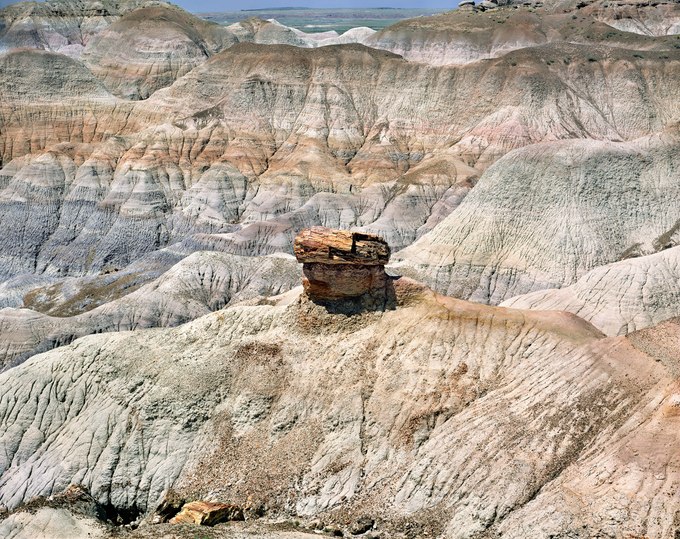Balanced on a crumbling pedestal rests a piece of petrified wood from an extinct conifer tree buried under clay, mud, and sand in tropical waters 220 million years ago. During that time, conifers, fern trees, and ginkgoes dominated a warm, wet landscape along vast waterways and often reached heights over 200 feet. Because of the way they became preserved, none of the fossilized trees I encountered in Petrified Forest National Park were standing. Trees that fell oftentimes became submerged in river channels or floodplains where the lack of oxygen inhibited their decay.
Stripped of bark and branches and interred in sediment, ash from nearby volcanoes was the primary ingredient for petrifying trunks. Ash filled the air and dissolved in streams, saturating fallen trees and replacing nearly all their tissue, replicating their structure and texture. Through a complex process that begins rapidly and then progresses slowly, the chemical composition of the ash eventually transforms the wood into quartz. Remnants of a tree's lignin, the organic material that provides wood its hardness and strength, were sometimes encased within the quartz, offering a biological trace of its former existence.
The multi-colored badlands where this log lay swell when it rains and shrink as the mud dries, causing the ground to heave, buckle, and quickly erode. The heavy, brittle, petrified wood breaks easily, typically across its narrowest width, as if neatly sliced by a chainsaw. In the arc of geologic time, these petrified trunks are temporary features in a rapidly changing landscape. Logs like this one eventually tumble down the clay slopes as new fossilized wood becomes unearthed.
Location commentary and research by James Baker.

